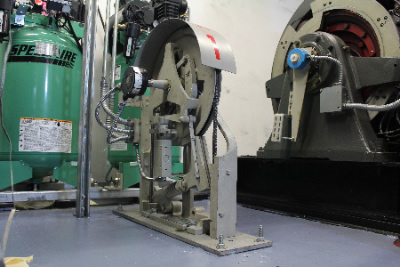
Demystifying Elevator Precision: The Role of Encoders
Anyone familiar with the inner workings of elevators knows that many vital components fly under the radar of the riding public and are rarely, if ever, highlighted as important to the elevator’s smooth operation. Like members of an orchestra, each element has its role to play, and the elevator only works when all of these roles are carried out correctly and in unison.
One core aspect of any elevator is the work carried out by the encoder. This device ensures precision and safety of elevator movements, just like the orchestra’s conductor, turning individual, physical actions into a smooth, coordinated motion. Unlike the orchestra’s conductor, however, encoders rarely get their moment in the spotlight.
All About Encoders
An encoder is a sensor that is responsible for turning the physical movement of an elevator into digital signals. In essence, an encoder acts as the liaison between the mechanical system and the elevator control system by providing real-time feedback about the elevator’s position and speed within a building. While their role may sound straightforward, encoders have a profound impact on elevator functionality.
Intricacy
Usually located on the elevator motor or governor, the sheave rotates and turns the encoder. This rotational data is converted into position and speed information and, just as the orchestra’s conductor carefully guides each note from the musicians, enables the exact monitoring of the elevator’s location. This accurate data guarantees that the elevator will stop with pinpoint precision at the required floor. Without encoders, this fundamental aspect of a functioning elevator may otherwise be impossible.
Precision
Perhaps the most significant characteristic of encoders is the unparalleled precision that they bring to elevator movements. The continuous monitoring of the elevator’s position and speed lets encoders eliminate the risk of overshooting or undershooting a floor. That means the elevator will stop exactly where intended. This precision not only enhances the overall user experience but also minimizes wear and tear on elevator components, contributing to prolonged system longevity.
Safe
Encoders are also integral to elevator safety. Serving as vigilant guards, encoders monitor elevator car speed and position, ensuring that the elevator stops exactly floor level, greatly reducing accidents due to tripping hazards. Encoders also monitor car door speed and positions to make sure that the doors open or close safely, reducing the possibility of someone being injured by a closing elevator door.
Encoders are not limited to elevators. Encoders play a critical role in the safety of escalators and moving walks. Encoders continuously monitor step speed, handrail speed, and many other important features of these conveyances. If the speed of the handrail or steps slows down or speeds up too much, the encoder signals the escalator or moving walk to stop until the problem can be corrected.
These safety features are critical, enhancing the security of the riding public and preventing potential accidents. This truly makes the encoder an indispensable component of a properly functioning, safe elevator, escalator, or moving walk.



Education: The Most Powerful Tool
The importance of encoders may go under the radar for most people that set foot in an elevator, but at NEIEP, the vital roles played by such elevator components is highlighted, studied, and taught to every budding Elevator Apprentice that comes through the NEIEP doors. The comprehensive Apprenticeship Program is supplemented by a full catalog of Continuing Education Courses to make sure each professional stays up to date on the latest technologies, as well as the long-standing elements, that allow elevators to run smoothly.
A Look Behind the Curtain
As we’ve seen, the unassuming encoder serves as the technological backbone of an elevator, enabling a smooth and secure ride for those inside. Without encoders, the fluidity and safety that we’re accustomed to when using elevators would be compromised, if not eliminated, showing you that these unsung heroes are essential.
Properly understanding the role of encoders gives you a glimpse into the vast and intricate world of elevator technology. Encoders teach us that small, often overlooked, devices can be the linchpin in providing a safe, reliable, and seamless vertical transportation experience to millions of people every day. Elevator precision is not just a mechanical feat; it’s a collaborative symphony between mechanics and digital technology.
The next time you find yourself traveling in an elevator, consider taking a moment to acknowledge the crucial contribution of the encoder—the conductor leading the orchestra of mechanics that we call an elevator.
